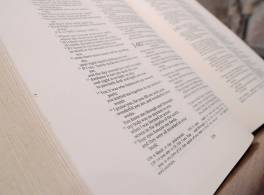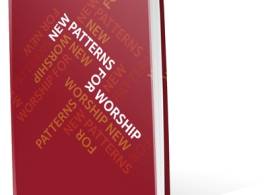The sample services are of two types:
1 ‘Outlines’, giving the basic headings and some suggested texts. These could form the basis of your own local service, but each also acts as an illustration of how to structure a service and how to choose resource material for a particular situation.
2 Fully ‘worked out’ services, printed in full. These illustrate how a service might be presented when printed out for the congregation. None of these are intended to be prescriptive in terms of layout, but they do illustrate different ways of handling headings, rubrics etc.
Some of these worked out services (such as the Service for Fathers’ Day) are ‘one-offs’ that illustrate a unique situation and would not necessarily be of use in this particular form in any other context or at any other time.
Others are more ‘standard’ and have been deliberately designed to be as widely applicable as possible, for regular use across a range of different churches. Examples include: An Evening Service of the Word, For all the Church Family, etc. Where appropriate, these could be copied in this form for local use. The usual rules about reproduction for local use apply, as explained in the Archbishops’ Council’s booklet A Brief Guide to Liturgical Copyright (see here for more information).
Each of the services includes a page of notes that explains the thinking behind the service and gives further suggestions.
Some of the services have been designed to work as non-eucharistic Services of the Word, whereas others have been constructed as Services of the Word with a Celebration of Holy Communion. In each case the one could be adapted to produce the other. In a few cases we have provided a non-eucharistic Service of the Word, with guidance in the notes about possible resources and structural changes if a eucharistic service is required.
Songs and hymns
In most of the sample services we have not indicated places for songs and hymns, as local custom will usually determine this. Where it is especially appropriate to include a hymn, song, or group of songs at a particular point in the service, we have indicated this, but these are only suggestions.
Posture
These samples include few indications of posture, to allow for maximum adaptability to local contexts. Where particular posture has become the local norm for a part of the service, it may help visitors if this is indicated clearly in the rubrics. Where posture varies it is best to omit it from the printed version and rely on clear verbal instructions.
The Lord’s Prayer
The Lord’s Prayer is printed here on almost every occasion in its modern form. Churches producing their own orders of service can easily replace it with the traditional form if desired.
The Lord’s Prayer is also sometimes printed with a ‘cue line’ (such as, ‘As our Saviour taught us …’) and sometimes without. Where no cue line is given this allows the leader to use one which is suitable for the particular occasion, or a simple, ‘Let us say the Lord’s Prayer together’, as appropriate.
IntroductionNew Patterns for Worship, material from which is included here,
is copyright © The Archbishops' Council 2002 and published by Church House Publishing.


